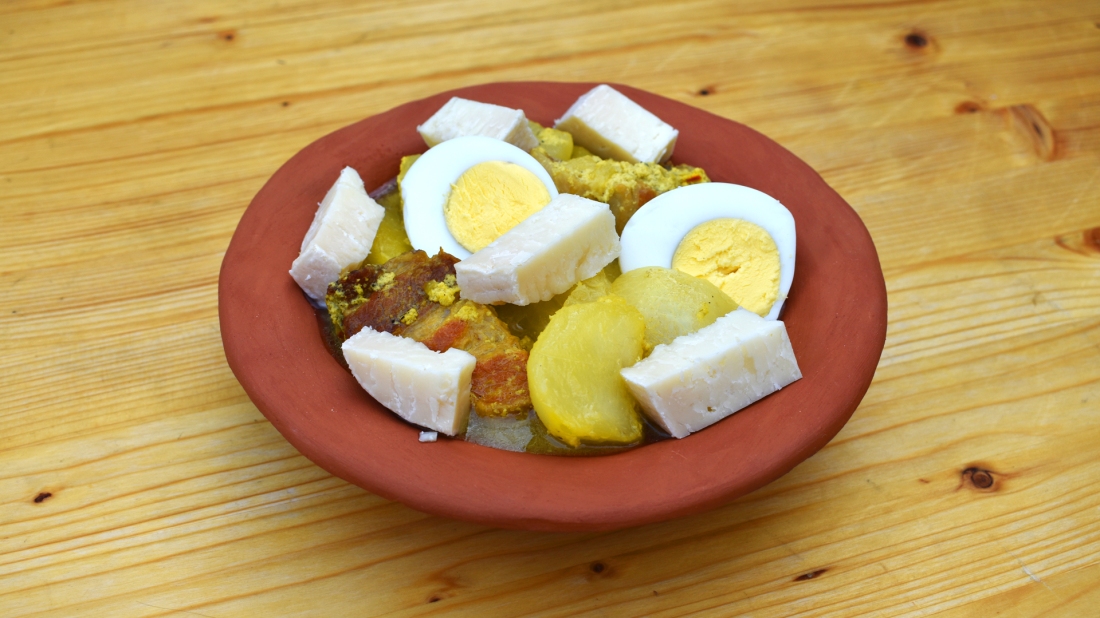According to the medieval physicians, food is fundamental to keep a good health, but at the same time, it hides a series of potential dangers. It is important knowing the characteristics of each aliment to choose how to combine them in order to remove the harm. Cooking in a healthy way is a complex art, as the medieval cooks know well: they have to follow (at least partially) the directions of the physicians and at the same time, they need to satisfy the taste of their master. Clearly, we are talking here about what medieval people considered healthy, which do not correspond necessarily to modern medical opinions.
In the medical handbooks, turnips are considered nourishing but heavy to digest. Paulus Aegineta, a 7th-century Byzantine physician, suggests to cook them twice. This advice becomes predominant in the following centuries, reaching the Renaissance, with an interesting addition: the turnips, boiled one or two times, need to be cooked with fat meat. We find these suggestions in many sources, for example, De Flore Dietarum (11th century), the agricultural work by Pietro de Crescenzi (beginning of the 14th century), and Michele Savonarola’s book on food (15th century).
We selected this recipe from a 14th-century Tuscan manuscript, called Anonimo Toscano. Though it is mainly a translation into vernacular of the Liber de Coquina, there are many variations and additions, for example, the recipe we are preparing today, which is absent from the Latin source. The anonymous author follows exactly the medical directions without sacrificing the richness of the flavors, an excellent example of how medieval medicine and culinary art converge sometimes to create extraordinary dishes.
Below, you will find the method and the video of the recipe (with subtitles in English and Italian), the original text with our translation, and a note about the ingredients. Enjoy!
Ingredients
600 gr turnips
400 gr pork belly
2 eggs
aged pecorino
goat milk
black pepper
saffron
salt
Method
Peel the turnips and cut them into four pieces, discarding the greens. Boil them in water halfway through.
Grind the black pepper and soak the saffron in warm water. Cut the pork belly and hard-boil one egg, then beat the other egg adding a good amount of water or broth.
Sear the pork belly without adding other fats, pour a little water and simmer the meat; then add the precooked turnips and two pinches of salt. When the turnips and pork belly are almost ready, add the saffron and black pepper, then pour the beaten egg, stirring for a few seconds.
Plate adding the sliced pecorino and the hard-boiled egg. We suggest a half or one egg for each plate.
Note about the method and ingredients
The cooking time changes considerably depending on the kind of turnips you use. Our turnips, young and tender, needed just ten minutes for the first boiling. We finished the preparation cooking them for another ten minutes with the other ingredients. Other kinds of turnips may need even one or two hours.
In this recipe, the author uses just the roots, discarding the greens. We suggest using them to prepare another dish described in a different passage of this book: parboil the greens, then discard the water and fry with oil and onions or leeks (both optional).
The author suggests using capon or any other meat. Following the directions of the physicians, we recommend choosing a meat with a good amount of fat.
Hard-boiled eggs are frequently used to finish not only medieval but also ancient Roman dishes, as described by Apicius and Martial.
The author does not specify what kind of aged cheese to use. Pecorino is a perfect pairing, but you can also choose Parmigiano or other kinds of hard cheese.
Saffron was one of the most common spices in the Middle Ages and Renaissance, frequently used as a colorant. It was cultivated in Sicily since the Antiquity, but later it was grown in many regions of the Italic peninsula. The production was insufficient to meet the demand, so it was also imported. The local variety was called with the Latin name crocus (as in this recipe), the imported one with the Arabic word saffrano or saffarano. We wrote more about it in this article about a beef stew recipe.
Original text
Togli i capi de le rape, senza foglie, taglia e fa’ bullire in acqua. E gitta via quella acqua, poni a cuocere con cappone o altra carne, e colorale con cruoco e pepe. E poste in esse ova distemperate, cascio secco tagliato e ova lesse, mettivi su latte di capra, e da’ mangiare.
Translation
Take the roots of the turnips, without greens, and boil in water. Discard the water and cook with capon or another meat, coloring with saffron and pepper. Add diluted eggs, aged cheese cut in slices, and hard-boiled eggs; pour goat milk and serve.
Ancient Vegetable Recipes Playlist
Recipes
Medieval Chicken Soup VIDEO
Medieval Beans and Bacon VIDEO
Medieval Prawn Pie VIDEO
Medieval Foxtail Millet Polenta and Spit-Roasted Goose VIDEO
Medieval Blancmange VIDEO
Medieval Peasant’s Beef Stew VIDEO
Medieval Peasant’s Leek Soup VIDEO
Medieval Quail Stew with Coconut VIDEO
Medieval Chicken Pie VIDEO
Medieval Green Ravioli VIDEO
Medieval Walnut Bread VIDEO
Medieval Lasagna VIDEO
Medieval Lamb Stew VIDEO
Medieval Quails with Sumac VIDEO
Medieval Sweet and Sour Sardines VIDEO
Medieval Trouts with Green Sauce VIDEO
Medieval Clams VIDEO
Medieval Sea Bream VIDEO
Medieval Roast Lamb with Green Sauce VIDEO
Medieval Chicken with Fennel Flowers VIDEO
Medieval Fried Fish VIDEO
Medieval Tripe VIDEO
Medieval Red Mullet Soup VIDEO
Medieval Roast Beef with Arugula Seed Sauce VIDEO


